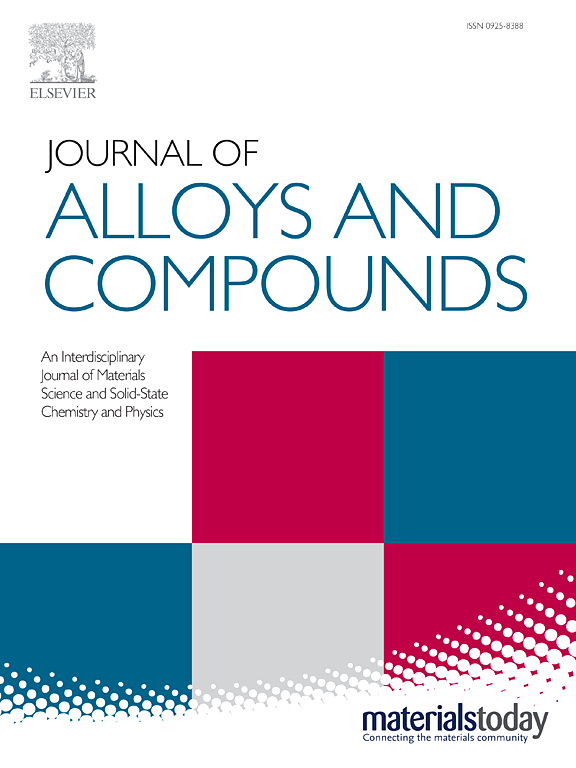Unveiling the microstructure-property relationships of additively manufactured Ti-Ta bimetal composites
IF 5.8
2区 材料科学
Q2 CHEMISTRY, PHYSICAL
引用次数: 0
Abstract
Ti-based composites with excellent multiple properties are highly required for surgical implant applications. Herein, we developed the Ti-Ta bimetal composites by the Electron Beam Powder Bed Fusion (EB-PBF) with the regulation of the scanning speed of the electron beam. It can be found that the metallurgical interface bonding can be formed between the Ti matrix and residual Ta particles in the Ti-Ta bimetal composites, and the application of the highest scanning speed of the electron beam (0.700 m/s) facilitates the achievement of the higher yield strength but slightly lower ductility than the other two composites fabricated under the lower scanning speed of electron beam. The strength enhancement of the Ti-Ta bimetal composites mainly derives from grain refinement and solid solution strengthening, and the contribution of load transfer strengthening, dislocation strengthening, and Orowan strengthening also takes roles to some extent. The higher ductility of the composites fabricated with lower scanning speed of the electron beam (0.600 m/s and 0.675 m/s) mostly derives from the stronger interfacial bonding between residual Ta particles and Ti matrix and lower dislocation density in the interfacial area. In addition, compared to Ti-6Al-4V, the Ti-Ta bimetal composites have comparable wear resistance and better corrosion resistance, and in vitro biocompatibility. The findings pave the new route for developing the Ti-based composites with the desired multiple properties for surgical implants.
揭示添加法制造的钛钽双金属复合材料的微观结构-性能关系
外科植入物应用对具有优异多重性能的钛基复合材料有很高的要求。在此,我们利用电子束粉末床融合(EB-PBF)技术,通过调节电子束的扫描速度,研制出了 Ti-Ta 双金属复合材料。研究发现,Ti-Ta双金属复合材料中的Ti基体与残留的Ta颗粒之间可以形成冶金界面键合,而且采用最高的电子束扫描速度(0.700 m/s)可以获得更高的屈服强度,但延展性略低于其他两种在较低电子束扫描速度下制造的复合材料。钛钽双金属复合材料强度的提高主要源于晶粒细化和固溶强化,载荷传递强化、位错强化和奥罗旺强化也在一定程度上起到了作用。用较低的电子束扫描速度(0.600 m/s 和 0.675 m/s)制造的复合材料具有较高的延展性,这主要源于残余 Ta 粒子与 Ti 基体之间较强的界面结合以及界面区域较低的位错密度。此外,与 Ti6Al4V 相比,Ti-Ta 双金属复合材料具有相当的耐磨性、更好的耐腐蚀性和体外生物相容性。这些发现为开发具有外科植入物所需多种特性的钛基复合材料铺平了新的道路。
本文章由计算机程序翻译,如有差异,请以英文原文为准。
求助全文
约1分钟内获得全文
求助全文
来源期刊

Journal of Alloys and Compounds
工程技术-材料科学:综合
CiteScore
11.10
自引率
14.50%
发文量
5146
审稿时长
67 days
期刊介绍:
The Journal of Alloys and Compounds is intended to serve as an international medium for the publication of work on solid materials comprising compounds as well as alloys. Its great strength lies in the diversity of discipline which it encompasses, drawing together results from materials science, solid-state chemistry and physics.
 求助内容:
求助内容: 应助结果提醒方式:
应助结果提醒方式:


